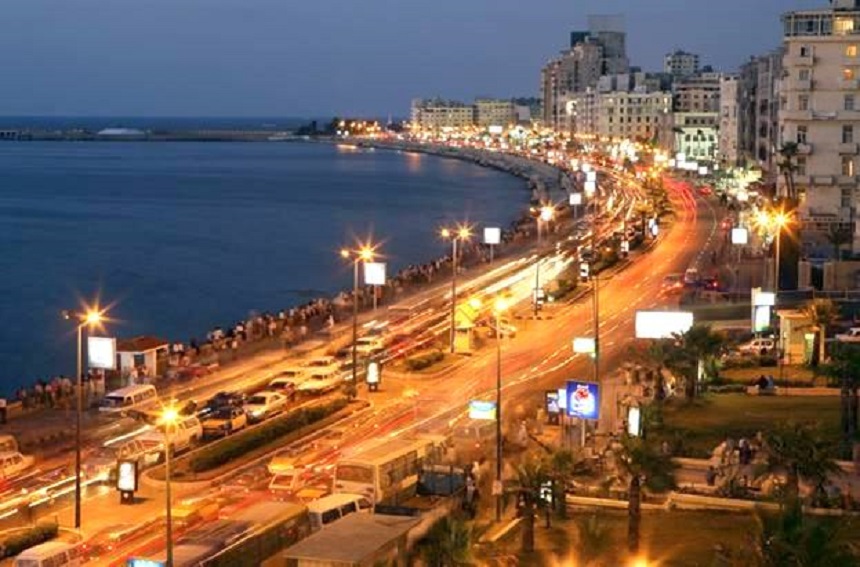- The mighty Macedonian Alexander the Great came to Egypt in 331 BC after conquering Greece and selected a small fishing village on the Mediterranean coast to establish his new capital, Alexandria. The city is oriented around El Raml square and Saad Zaghoul square, the large square that runs down to the waterfront. Alexandria once had a great library that contained more than 500,000 volumes, and at its peak the city was a great repository of science, philosophy and intellectual thought and learning.
- The Greco-Roman Museum contains relics that date back to the 3rd century BC. There’s a magnificent black granite sculpture of Apes, the sacred bull worshipped by Egyptians, as well as an assortment of mummies, sarcophagi, pottery, jewelry and ancient tapestries. Another highlight is one of the few historical depictions of the Pharos of Alexandria, one of the Seven Wonders of the World. The only Roman Amphitheatre in Egypt was rediscovered in 1964. Its 13 white marble terraces are in excellent condition and excavation work is still under way, although the dig has shifted a little to the north of the theatre.
- Pompey’s Pillar is a massive 25m (82ft) pink granite monument measuring 9m (30ft) around its girth. The pillar should rightfully called Diocletian’s Pillar, as it was built for the emperor in AD 297, and was the only monument left standing following the violent arrival of the Crusaders around 1000 years later. The Catacombs of Kom ash-Shuqqafa are the largest known Roman burial site in Egypt, and consist of three tiers of burial tombs, chambers and hallways. The catacombs were begun in the 2nd century AD and were later expanded to hold more than 300 corpses. There’s a banquet hall where the grieving would pay their respects with a funeral feast. Experts are hoping to discover Cleopatra’s Palace under the seabed off Alexandria; columns were found in 1998, and recently archaeologists raised a beautiful statue of Isis from the depths. The Crusaders destroyed Cleopatra’s Library.
- Muntazah Palace the center city is brightened by flowering plants in the Nuzhah, Zoological, and Antoniadis gardens. Seaside gardens decorate the grounds of the Muntazah Palace on a high dune overlooking Muntazah Bay. Muntazah was formerly the summer residence of the Egyptian royal family.



 Your trustworthy partner
Your trustworthy partner